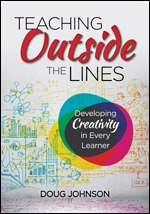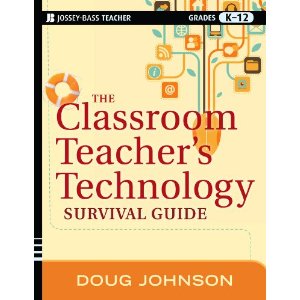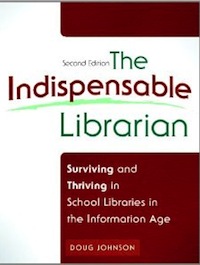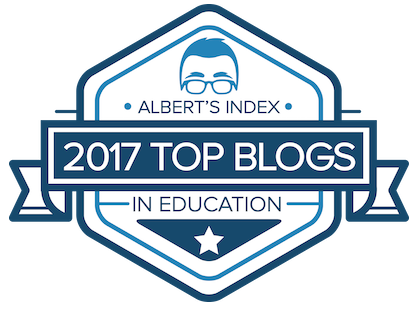iCommons - the future of school libraries?
 Tuesday, November 6, 2012 at 05:39AM
Tuesday, November 6, 2012 at 05:39AM The American School of Bombay's elementary librarian, Heeru Bhojwani, has shared with me a new concept in library facility design and programming - the iCommons - that ASB is implementing this year. I had the good fortune to visit ASB and meet Heeru and her dynamic colleagues at an Unplugged Conference a few years ago. ASB is just one of those amazing schools that not only leads, but pushes the rest of into the future. Read about how Heeru and her staff are taking the physical library to the classroom!

iCommons at the American School of Bombay
“Open Classrooms” are a reflection of the dedication and forward-thinking of the leadership at the American School of Bombay to support 21st century skills and personalized differentiated learning. Each learning space or pod now has movable walls -- open environment of learning! Simultaneously, the conventional centralized library was replaced by multiple interactive libraries called iCommons (Information Commons).
We all know that a library is a vital center of learning for students of all ages, right from early childhood to adulthood. Library as an institution is intended to provide extensive collection of information and provide services to help library users interpret and use information to create new ideas and knowledge. Every educational establishment and pedagogy promote and endeavors to provide a good library to supportlearning.
With the onset of the Internet, learning too has changed. Internet carries an extensive range of information resources in terms of knowledge based databases, and this has definitely impacted traditional information provider - The Library. To support information literacy, creativity, critical thinking, and collaboration led to the introduction of iCommons at the school. Each Grade Level Team now has their own iCommons with an iMac to create digital products. This open collaborative space supports and engages students on their learning journey. Each of the six iCommons house a wide collection of ebooks, playaways, audio books, print books and databases to support learning.
Bringing the iCommons to the hub of the child’s learning within his or her immediate reach, right outside the classroom makes it accessible at the child’s convenience, making it even more relevant. Adopting this fluid concept of the iCommons allows students to not only be consumers and ethical users of information but producers and creators of informational products. iCommons resonates the culture of 21stCentury Library.
Ms. Heeru Bhojwani
Librarian - Elementary School
iCommons
American School of Bombay
After I read Heeru's short article above, I has some questions that she graciously answered:
How do you staff the iCommons? Well, the iCommons are being managed by the teaching assistants who are on the floor, for eg: just as the teaching assistant would maintain their class libraries now they take care of shelving books on their floor (yes, they have been given training by me)
Where are YOU as the professional librarian? Physically, I have an office, and I am all over the place giving lessons on information literacy and book talk and collaborating when needed for their research/inquiry projects. And have classes with students to demonstrate how the ebooks could be used.
Can students access physical materials from any iCommons or only their own? Yes, students can access physical materials from any floor. The books are color coded so it goes back to the right spot. Students independently check out books from Grade 1-5. KG kids are supported by teachers, Yes, the Teachers and Teaching Assitants help out when the students require help. In fact, it is interesting to see students teaching parents how to check out the books in their account without the help of a library assistant or a librarian or any other adult.
Are all materials centrally cataloged with indicators in the record for location? If large group instruction is needed, is this just done in the classroom? Yes, all books are centrally catalogued using destiny and yes, there is a record for location. Students have been given instructions and guidance on how they could use the catalog for their grade.
Again, I think this is really an interesting concept. How will you determine whether it is more or less effective than a centralized library? I am already finding that students have direct and complete access to the resources. They don’t have to go to the library because it is right there everytime. All students are browsing oppose to some coming to the library. Classroom collection tends to have more fiction and few nonfiction but, now they have a wide variety of both fiction, nonfiction and other reading materials including magazines in their iCommons. (information commons and Ideas Commons). I am finding that students are taking responsibility as they seem to have more control over their resources and soon they will have more understanding of their collection that is available to them. (This is because now they don’t need to go to the library once a week or when needed, they are actually physically present with the resources.)
Heeru, I hope to get an update toward the end of the year!









Reader Comments (6)
Just a quick note to let you know that your blog was mentioned in an article I had published in InFocus by Library Works / Librarians Yellow Pages. Its entitled "The Top 25 Library Blogs." I've also repurposed / republished it on the Rivistas Subscription Services site at http://libraries.rivistas.com/top-25-library-blogs/
I just wanted to say thanks for having such a great library oriented blog!
Thanks, Bonnie. I appreciate the recognition.
Doug
This is a very interesting variation on the Virtual Library. My understanding from the post is that students in a given classroom have access to an iMAC located outside that provides access to online resources customised to the teaching program for that class + some (how many?) print resources to match. I can appreciate how the customisation of online resources can work well for teachers and learners alike. However my query (as a retired teacher librarian) is how much duplication of print resources does this require and how do students access print materials that they are interested in but lie outside their particular program? This refers to both fiction and non-fiction print materials.
Hi Sue,
Good question. I will forward it to Heeru.
Doug
Heeru's response:
Dear Sue and Doug,
Our School is a one-to- one laptop school. We have our online resources on the iCommons Website for students to access from their own laptops.
The iMac on the floor helps students to edit images, make and edit video’s and primarily for podcasting.
Every iCommons has over 2,200 printed materials both fiction and non-fiction for about 58 students. The printed material is a collection of all subjects and students can access all the resources that are available on every iCommons and if they located a title found in another iCommon, the student can physically go and get it or request for it online for older students. For younger students, the teaching assistant accompanies the child to help him/her locate the books required.
I hope that answers the question. Since, this is a new concept I am happy to get as many questions and doubts because it helps me think ahead of areas that I may have slipped.
Regards,
Heeru
Thanks for the great write-up, Doug. I can maybe answer a couple of the questions too.
Duplication of Resources: we merged the classroom libraries with the iCommons and found we had lots of duplicate materials - (many of the teachers had similar favorite books, etc.) Just distributed them all over.
Access to other materials: students can get print materials from anywhere (including the secondary school where I work) at ant time. students either walk to that floor or we send it over through our delivery system. Electronic materials are available to anybody.
One other point - we are currently expanding the iCommons concept to the secondary school - we recently added all the middle school classroom libraries into our catalog and are in the midst of planning the furniture / shelving for the middle school commons area. We are also looking at possibly moving some of the science materials to the science commons area.
Thanks.
Thanks, Tim. Great info.
Once you get iCommons up and going at the secondary level, another write up would be great.
Doug